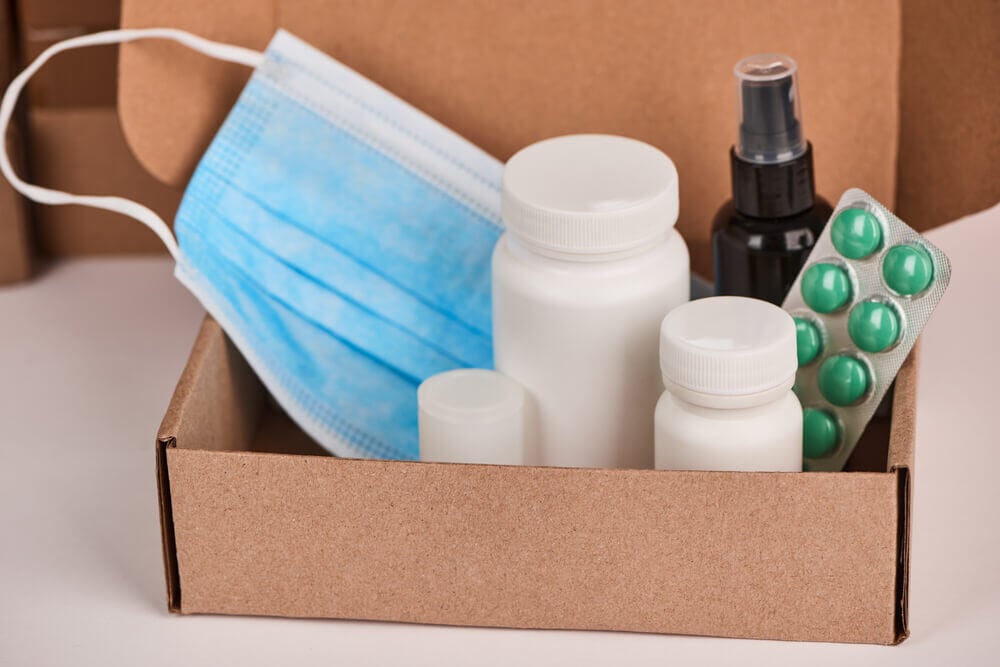Best Practices for Shipping Pharmaceuticals

Pharmaceutical manufacturers must use specific packaging and shipping practices to ensure the integrity of drugs and medical devices. Best practices for shipping pharmaceuticals usually include choosing the correct materials, ensuring appropriate temperature controls, and managing the security of products.
General Best Practices for Shipping Pharmaceuticals
The general best practices for pharmaceutical shipping include controls for temperature, secure item packaging, and maintaining control over product integrity. These can vary depending on the specifics of your products.
Maintaining Product Security
There are several aspects of product security for pharmaceuticals. First, the manufacturers and logistics providers must maintain logs of everyone who has access to drugs during their transportation and warehousing. They must also provide secure packaging that reduces any physical strain on products while shipping pharmaceuticals.
Pharmaceutical transportation and storage facilities must meet minimum security measures. This can include minimum lighting requirements at entrances, security protocols, and alarms for after-hours monitoring.
Plastic trays are an ideal solution in this situation. Individual compartments in round, square, or rectangular configurations keep each drug container secure and upright. It also limits the movement of individual bottles, boxes, and vials. As a result, your items arrive at their destination in excellent condition without breakage or other damage.
Shipping Temperature Sensitive Pharmaceuticals
.jpg?width=1000&height=681&name=Depositphotos_410640252_S%20(1).jpg)
Not all pharmaceuticals require specialized temperature controls. However, for those that do, maintaining the correct temperature is crucial for safety. That is why temperature control and monitoring are important components of pharmaceutical shipping regulations.
Some medicines, such as insulin, some vaccines, certain eye drops, and many chemotherapy drugs, require refrigeration during transport. The ideal temperature range for refrigerated pharmaceuticals is approximately 35 to 45 degrees Fahrenheit.
Cryogenic medications must be kept at sub-freezing temperatures. This requires highly specialized equipment and handling procedures. Some pharmaceuticals that fit this category include gene therapies, blood products, and many vaccines.
Many medicines, including most capsules, pills, and powders, can withstand shipping at standard room temperatures. These ambient temperature medications generally do best between approximately 60 to 75 degrees Fahrenheit.
No matter what temperature your products require, industry-specific packaging materials can help ensure consistent environmental controls. Ready-Made Plastic Trays provides in-stock and custom trays for shipping pharmaceuticals and other medical supplies.
Using Specific Packaging Materials
Several types of packaging materials are appropriate and safe for pharmaceuticals. Plastics are ideal because they are sterile, an important feature for medical products. They are also very durable and sturdy, which helps increase the cushioning of individual products within packaging cartons. This reduces damage, which can cause a medicine shipment to be quarantined or discarded.
Plastics are also lightweight and environmentally friendly, which can help you meet sustainability goals. Lightweight packaging reduces overall shipping costs and the environmental impact of shipping. Many of our plastic materials are recycled, and we work with suppliers to ensure the most sustainable manufacturing practices possible.
Pharmaceutical Shipping Regulations
It is important to completely answer the question “How are pharmaceuticals shipped?” to ensure compliance with all regulations and legal and safety requirements. The Federal Drug Administration provides minimum standards for warehousing and transporting prescription drugs in Title 21.
Title 21 provides very specific specifications that all pharmaceutical logistics providers must meet. These include maintaining the physical security of drugs, temperature controls, and record keeping. Some of the pharmaceutical shipping regulations established by Title 21 include:
- Inspections: The FDA requires inspections of medications when they move from one location to another. This includes checks for damage, tampering, and appropriate storage conditions.
- Quarantine: Some medications must be quarantined during pharmaceutical shipping and storage. This can happen if drugs are mislabeled, out of date, or damaged. Altered seals or those that have been tampered with, can also trigger a quarantine process.
- Record keeping: Records are necessary to maintain a chain of custody for all drugs. Manufacturers and transportation providers must have and follow an established process for record keeping. This helps if there are any issues with medication quality, or if parts of a shipment are unaccounted for.
- Temperature and humidity: Establishes the temperature controls and equipment required to maintain the appropriate environment. This includes those for ambient, refrigerated, and cryogenic medications.
In addition to these requirements, all manufacturers and logistics providers must also register with the Drug Enforcement Agency and any appropriate state and local agencies. This may increase requirements for regulatory compliance. For example, the DEA has strict rules about transporting controlled substances.
Packaging and Labeling Requirements
.jpg?width=1000&height=667&name=Depositphotos_96098642_S%20(1).jpg)
Current Good Manufacturing Practice regulations established by the FDA include guidance for packing and labeling. These help ensure product safety and limit cross-contamination. Labeling rules cover both individual containers and bulk packaging used for shipping. Information that must be on labeling includes:
- Drug name
- Expiration date
- Manufacturing information
- Required temperature for storage
Additionally, all drugs must use a tamper-evident seal. This provides a clear indication of any tampering that could compromise product integrity.
Shipping Materials
The type of pharmaceuticals you ship will determine the correct material choice. However, there are some basic rules to follow to maintain best practices. For example, the ability to regulate temperature, maintain sterility, and provide adequate physical cushioning are all important qualities.
Recycled high-impact polystyrene is an environmentally and price-conscious option for many pharmaceutical products. Plastic packaging trays in virgin HIPS and recycled polyethylene terephthalate are additional options that are well-suited for shipping pharmaceuticals.
No matter what types of pharmaceuticals you are shipping, our team at Ready-Made Plastic Trays can help you choose the appropriate materials to ensure safe transport. In addition to our stock materials, we can also custom-order specialty packaging materials and manufacture custom trays to meet your specific shipping needs.
Ready-Made Plastic Trays for Shipping Pharmaceuticals
Proper packaging is crucial to safely shipping pharmaceuticals and medical devices and for complying with federal, state, and local regulations. Ready-Made Plastic Trays has a full line of in-stock medical product packaging trays, or we can manufacture high-quality custom pharmaceutical shipping materials to your specifications. Whichever option you choose, our packaging trays ensure your products get to their destination safely while meeting all applicable regulations. Contact us to request a free sample.



